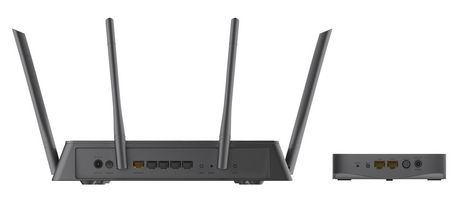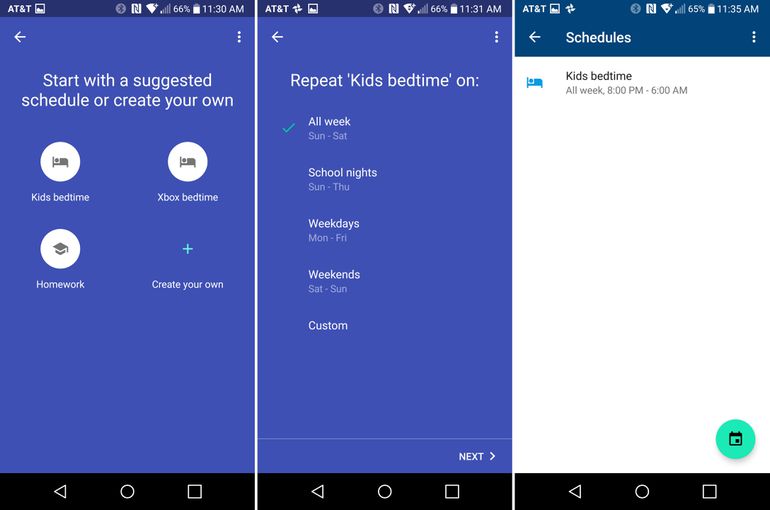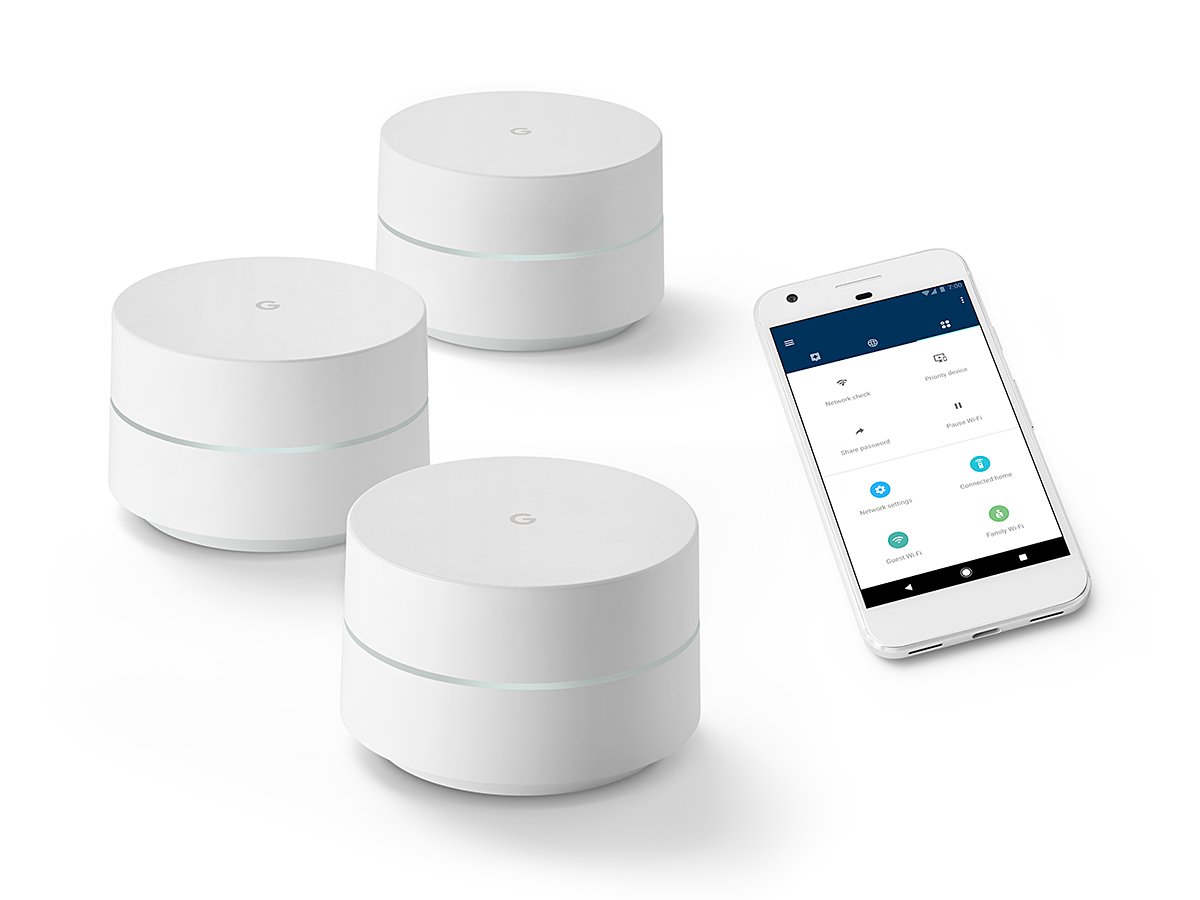 The range and scope of Wi-Fi Routers has increased with the number of devices and services that we subscribe to in our homes.
The range and scope of Wi-Fi Routers has increased with the number of devices and services that we subscribe to in our homes.
There was a time when Wi-Fi routers were just like TVs; you got one with your cable box and didn’t bother changing it for many years.
This has changed dramatically. Not only do we have an exponential increase in devices that tap into the internet from homes and offices, the amount of bandwidth we consume has easily quadrupled. Why is this? You can thank social media, online gaming and streaming services, as well as the need to constantly be connected.
Wi-Fi routers have evolved. In the past, it was downright scary to have to set up a new router. You needed to go on a webpage, set passwords and parameters, and dig through arcane menus to get them to work. Updating firmware was a pain, and troubleshooting was a headache for non-technical users.
Newer Wi-Fi routers now have companion apps which means you can manage them easily from your smartphone. The approach is more user friendly and intuitive.
State of Wi-Fi Routers

Wi-Fi standards have also changed dramatically in the past five years. We have various bands (i.e. 2.4 GHz and 5 GHz), as well as the ability to expand signal thanks to Wi-Fi extenders which stretch signals to basements and attics as well as dead spots in homes and offices.
Wi-Fi routers have also gotten more sophisticated. They can list down all the devices on a network and even prioritize specific devices to get more bandwidth. A typical household will have various smartphones, tablets, PCs, streaming set-top boxes, gaming consoles and even smart home appliances.

Newer routers can adjust the signal to each individual device.
Newer Wi-Fi routers even have multiple bands that separate higher-bandwidth devices such as Smart TVs and media streamers like the Apple TV 4K, Roku and Chromecast.
This ensures that when streaming 1080p HD quality video or 4K video, there will be fewer artifacts, better audio and picture quality, and no pauses for buffering. This becomes even more important when we start adding smart speakers, connected Wi-Fi speakers, and smart home appliances.
Standalone routers and extenders

For smaller homes or apartments as well as for specific applications (i.e. network gaming), there are various standalone Wi-Fi routers that can manage multiple access points and still specialize in high-bandwidth usage.
I’ve used the Linksys and TP-Link routers for network gaming on my Xbox One S but it also manages all the devices at home.
One of the big advantages of standalone routers is that they have various Ethernet ports in the back for plugging printers, PCs, and other devices without Wi-Fi directly. If you’re streaming video or doing a lot of video conferencing, consider plugging in directly, since there’s less signal interference and higher speeds are sustained.
Standalone routers are one-piece router solutions. They’re usually situated at the centre of the home or somewhere that is closest to the main internet connection.

These routers are usually large, unsightly, and have anywhere from two to six antennas to enable better connections.
Innovations in this space have been consistent, including dual-band or even tri-band capability, and security features built-in. Most households hide these routers from plain view because they’re large and cumbersome.
Standalone Wi-Fi routers are ideal for small spaces like apartments or small home offices. If you’re using mostly notebooks, PCs, tablets and smartphones, these will work well provided you fall within range.
A dual-band or tri-band router should be considered if you plan on using VoIP (Voice Over Internet Protocol) devices, streaming 4k files, gaming, or downloading or uploading a lot of files.
Mesh Routers solve many problems

MESH routers are the newer option. They use various Wi-Fi routers or hotspots that can sustain a signal across larger spaces.
Using multiple access points that are totally spread out in each area to ensure maximum possible coverage is often the better option when compared to a single high-end router. Drop-offs, buffering, slow and dead spots can be nearly eliminated with the help of these high-end mesh routers.
Mesh routers don’t stretch out or extend the Wi-Fi signal. They can maintain the same bandwidth across a wider range of space (i.e. 50 Megabyte per second bandwidth would be the same in the kitchen, family room and the basement if three routers are being used). Because they offer great coverage, mesh routers can cover spaces in blanket fashion and eliminate dead spots.

Mesh router systems like Google Wi-Fi and Linksys Velop also manage signals better. They can focus more bandwidth on specific devices (i.e. smart TV, streaming boxes, Xbox), In addition, connectivity, security, and maintenance all tend to be easier (often automated) with mesh routers, as is granular control.
As a parent, I appreciate Google Wi-Fi’s security features, as well as how it allows me to set parameters for my kid’s iPad use. I can also see all the devices on my network and decide which ones to turn off.
I noticed that mesh routers are designed to not look like technology so that they can be openly displayed and even blend in most home interiors.

I’ve transitioned my home from a standalone router solution to a mesh set up using Google Wi-Fi. Living in an apartment, there’s always a lot of interference from outside networks and even some devices indoors, and mesh helps to alleviate this issue.
A product like Google WiFi has built-in algorithms which use A.I. or artificial intelligence to maximize connection speeds and adjust these on the fly. As a user, this is something you don’t even have to worry about. I also like that mesh router systems are easy to maintain. Updates happen securely and in the background and when new features are added on, the router sends me an email.
The disadvantage of mesh routers is that they do not have many Ethernet cables for connecting older peripherals or devices like printers. You also have multiple devices to plug into electrical outlets instead of a single router.
Conclusion

Choosing the right Wi-Fi router depends on many variables. The size of the area to be covered, the number of devices connecting to the network, as well as the type of services a household subscribes to. Smaller areas or places with fewer connected devices will be well covered by standalone routers. Some routers featuring dual or tri-band functionality can effectively provide high-speed connectivity to streaming set-top boxes without decreasing quality while still managing various smartphones and tablets.
Mesh router systems, which use multiple routers to blanket a larger house or area with sustained Wi-Fi speeds are a great solution for multiple-story homes or offices, or situations where various dead spots present themselves.




Hi Gadjo Sevilla ,
i agree with you this was a wonderful information about the reset of wireless router but my router still ask previous password before configure the setting can you tell me the best solution for this kind of problem .
Thanks.
Comments are closed.